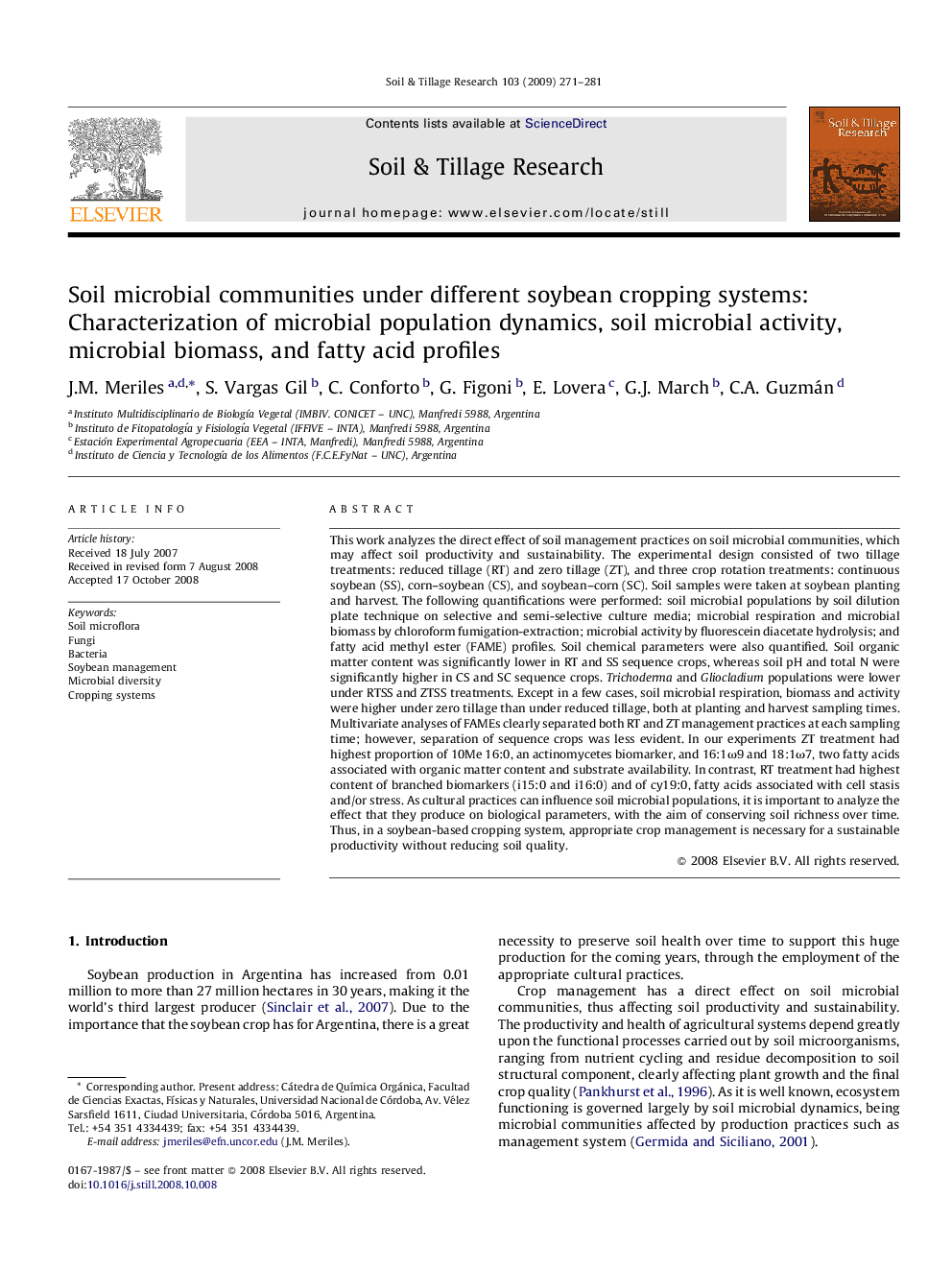| کد مقاله | کد نشریه | سال انتشار | مقاله انگلیسی | نسخه تمام متن |
|---|---|---|---|---|
| 306321 | 513090 | 2009 | 11 صفحه PDF | دانلود رایگان |

This work analyzes the direct effect of soil management practices on soil microbial communities, which may affect soil productivity and sustainability. The experimental design consisted of two tillage treatments: reduced tillage (RT) and zero tillage (ZT), and three crop rotation treatments: continuous soybean (SS), corn–soybean (CS), and soybean–corn (SC). Soil samples were taken at soybean planting and harvest. The following quantifications were performed: soil microbial populations by soil dilution plate technique on selective and semi-selective culture media; microbial respiration and microbial biomass by chloroform fumigation-extraction; microbial activity by fluorescein diacetate hydrolysis; and fatty acid methyl ester (FAME) profiles. Soil chemical parameters were also quantified. Soil organic matter content was significantly lower in RT and SS sequence crops, whereas soil pH and total N were significantly higher in CS and SC sequence crops. Trichoderma and Gliocladium populations were lower under RTSS and ZTSS treatments. Except in a few cases, soil microbial respiration, biomass and activity were higher under zero tillage than under reduced tillage, both at planting and harvest sampling times. Multivariate analyses of FAMEs clearly separated both RT and ZT management practices at each sampling time; however, separation of sequence crops was less evident. In our experiments ZT treatment had highest proportion of 10Me 16:0, an actinomycetes biomarker, and 16:1ω9 and 18:1ω7, two fatty acids associated with organic matter content and substrate availability. In contrast, RT treatment had highest content of branched biomarkers (i15:0 and i16:0) and of cy19:0, fatty acids associated with cell stasis and/or stress. As cultural practices can influence soil microbial populations, it is important to analyze the effect that they produce on biological parameters, with the aim of conserving soil richness over time. Thus, in a soybean-based cropping system, appropriate crop management is necessary for a sustainable productivity without reducing soil quality.
Journal: Soil and Tillage Research - Volume 103, Issue 2, May 2009, Pages 271–281